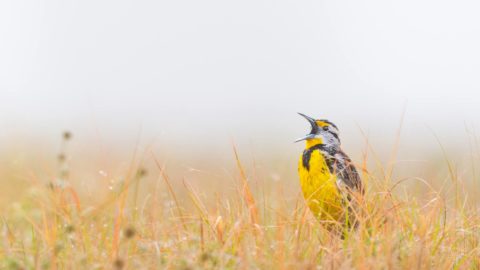View From Sapsucker Woods: Why Birds?
June 7, 2022From the Summer 2022 issue of Living Bird magazine. Subscribe now.
People often ask me, “Why birds?” It’s a conversation that often starts with the origins of the Cornell Lab of Ornithology, but usually we end up discussing the broader question of why people are so interested in birds.
For me, the answer lies in the fact that humans have a special relationship with birds in their daily lives. Birds are large, colorful, noisy, mobile, active during the day, show a series of behaviors to which we can relate, and they occur just about everywhere that we live. Also, with a bit of practice we can quickly learn to identify bird species just by watching or listening to them. When scientists identify and track individual birds, we can even start to understand their behaviors and migration patterns in the wild. That’s a very unusual set of features for a living thing, and it means that we know a lot more about birds than we do for any other comparable group of wild animals. Birds have effectively become the model organism for understanding a wide range of aspects of ecology, evolution, and conservation, particularly at continental and global scales.
What’s more, people care about birds, again probably because they are familiar to us and they are a personal touchpoint for our relationship with the natural world. The 3 Billion Birds Lost study is a great example of this. By bringing together data on hundreds of species of birds from across North America, that study was able to demonstrate the scale of loss over three decades and the cumulative impact on bird populations across the entire continent. It’s an example of birds acting as an early warning for wider ecological collapse. Birds are literally the canary in the coal mine, warning of the imminent threat to our life support systems.
Now there’s been another breakthrough in the use of birds to understand large-scale patterns in nature. An international team of ornithologists has published a new database—AVONET— that brings together data on the ecology, morphology (an organism’s size and shape), and geography of more than 11,000 bird species (see Sizing Up the World’s Birds with AVONET in this issue). The study is the result of decades of painstaking measurements of over 90,000 museum specimens, and the data is being made freely available to the global scientific community. The hope is that making the data open and available right from the start will accelerate its use in research and conservation.
In saying all this I don’t think that we should be satisfied with understanding birds and ignore the rest of life. Quite the opposite. As we increasingly use birds to understand how our planet works, we need to be very careful to be aware of when birds are likely to be a good surrogate for broader biodiversity, and when they’re not. After all, those features that make birds so familiar to humans—large, colorful, noisy, mobile, active during the day—also make them very unusual organisms in the grand scheme of things. And much of our knowledge on birds is based on the terrestrial realm. So we need to know when they’re a good model organism and when we need to be careful to widen our perspective.
What excites me most about databases like AVONET is the opportunity to combine the new information on ecology and geography with the new models of species populations trends coming out of the eBird citizen science project. This will enable us to go beyond measuring the decline of birds to understand why some species, and some habitats and regions, are so vulnerable, while others remain relatively intact. In turn, that opens up a solutions-based, hopeful approach to conservation, for birds and for biodiversity more widely.
Why birds? Because they offer us a unique lens to monitor the health of our planet at a global scale, and to understand what it will take to bend the curve of biodiversity loss. And because people care.


All About Birds is a free resource
Available for everyone,
funded by donors like you









